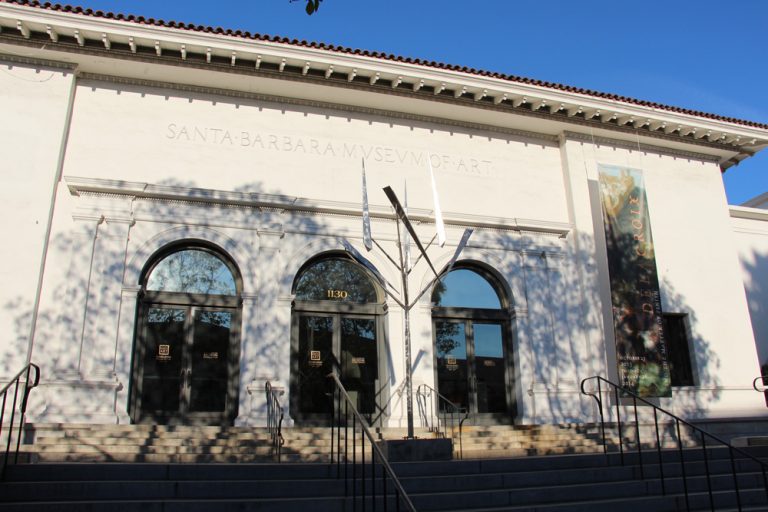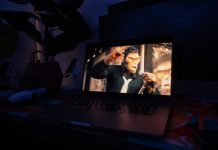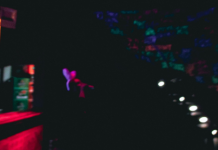
Rebecca Lauffenburger
Staff Writer
As the Santa Barbara Museum of Art (SBMA) celebrates its 75th year of existence, it finds itself at a significant crossroads. The museum, which houses more than 28,000 works of art in its permanent collection, is on the brink of a renovation which would expand its existing galleries by 25 percent and allow for a more creative use of space.
John Walsh, the director emeritus of the J. Paul Getty Museum in Los Angeles, has commented on the SBMA campaign.
“The plan is a remarkably smart use of space that will do justice to the very fine works in the collection,” Walsh said. “What’s more, it will provide a coherent experience for visitors as they move from gallery to gallery.”
Seven Doors, a collaborative effort between artist Jan Tichy and the curators of SBMA, is both a love letter to the museum’s rich history and a contemplation of its purpose as an institution, as well as how it will continue to project that purpose in future years.
With this in mind, I had some idea of what to expect upon entering the museum. The subtitle of the exhibit, “Jan Tichy and the Chiaroscuro of Art Museum Collecting,” hints at its possible themes, but all pretentiousness aside, the exhibit is just plain confusing.
The exhibit itself can be likened to a sort of found object collage. Tichy, a Chicago-based artist known for his ability to creatively merge photography, sculpture, video, and sound, hand-picked seven objects from the vaults of SBMA’s extensive permanent collection to accompany his own work.
Through the placement of these various objects, Tichy is able to create an account of the museum’s history while commenting on the museum’s role in integrating art into the lives of the public.
At first glance, the space seems disjointed, to say the least. Lining the walls are 14 of Tichy’s silk screen prints of tessellations, which utilize a monochromatic color scheme ranging from every shade of white to black that is perceivable to the human eye.
In a central glass case sit two oliphants (side-blown horns), one black, one white, in accordance with the theme of chiaroscuro. The ivory horns, dating back to the 19th century, are an exceptionally rare display, as ivory is not able to be legally acquired or sold beyond domestic boundaries.
In the center of the room rests a two-faced Roman Herm carved out of marble. With no context, the items stand alone as a seemingly irrelevant collection of objects, and I was hopelessly lost as to what their collective significance was.
The exhibit continued in an adjoining room, partitioned by a black curtain. As I walked through, any hope I had of resolving my confusion quickly faded. On the other side of the curtain was a dark, nearly empty room that only seemed to complicate the exhibit’s already cryptic dialogue.
If nothing else, the exhibit is notable for the profound way it uses physical art to showcase the more abstract idea of atmosphere, created through light and shadow. Every aspect of the space, from the bronze statue of a figure draped in a sheet, to the tiles projected on the wall behind it, created an eeriness that could be felt in every corner of the room.
Seven Doors has a lot going on visually, but the true artistry is in the way the exhibit explores the qualities of time and place. The tiles on the wall formed a moving mosaic that gradually shifted over the course of ten minutes. Meanwhile, as I circled the statue, the scene of the room changed; shadows created by the draped sheet obscuring the statue from view appeared and disappeared, creating a new composition and evoking new emotional responses from different angles.
While I watched the images on the wall disintegrate and reform into new images, I reflected on how fascinating it was that the exhibit demanded not only the attention of the viewer for a full ten minutes, but really, the very existence of a viewer at all.
The act of intentionally covering the only physical object in the room made a rather insightful statement about the role of art as something that exists to be experienced in a deeply personal way, and the role of both the viewer and the artist in the creative process. The “art” in this case was not the statue itself, but the way it was perceived through different perspectives by a viewer, who must physically walk around it and experience it in order to really “see” it.
The highlight of the exhibit was undoubtedly German Renaissance artist Albrecht Dürer’s woodcut “The Seven Angels Sounding Trumpets from the Apocalypse,” which is considered to be one of Durer’s greatest masterpieces. The work is number eight in a series of 15 woodcuts detailing the events described in the Book of Revelation.The print itself is an incredibly intricate vision showing God releasing the seven calamities down onto Earth. Upon close inspection, one can even see the Latin text bleeding through the page it was so masterfully crafted on.
In order to protect the piece from the harsh sunlight streaming in through the museum windows, which has a tendency to fade delicate paper works, it is obscured by a matte covering that must be lifted in order for the piece to be viewed.
The art presented in Seven Doors is interesting enough to warrant a visit to SBMA, but it is Tichy’s brilliant arrangement of these pieces that is truly on display and worthy of admiration. Seven Doors is on the surface an immersive exploration of light and shadow and the spaces in which they inhabit. But more than that, it is a commentary on the institution of the museum itself, and the way it strives to organize and preserve culture across time and space. Overall, it is a thoroughly thought-provoking, if somewhat baffling, exhibit, and one well worth experiencing.











